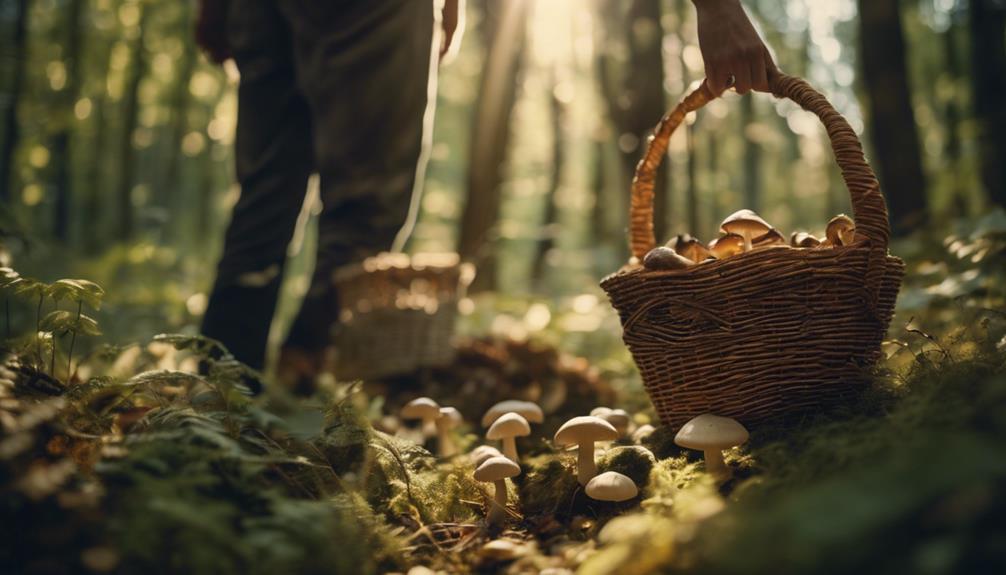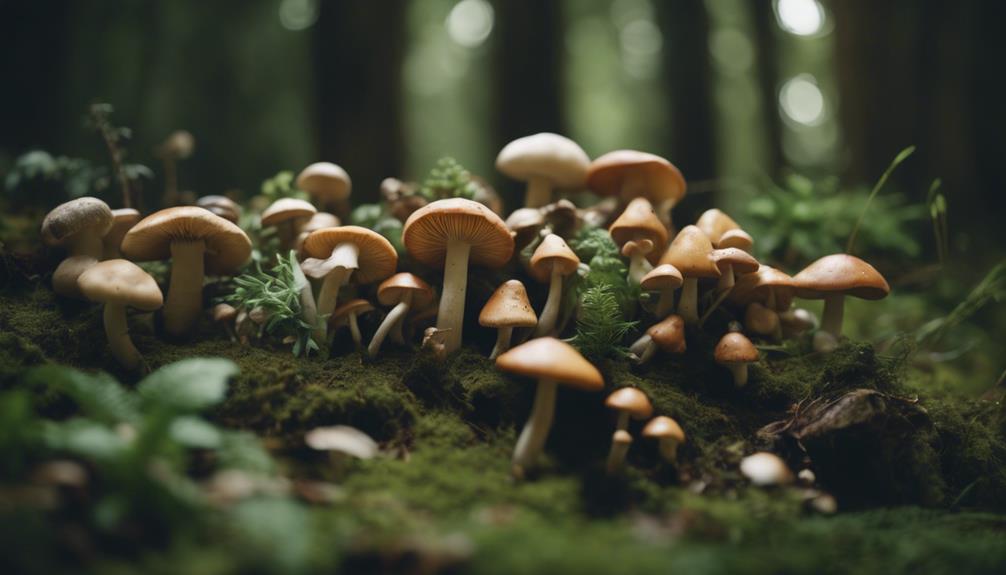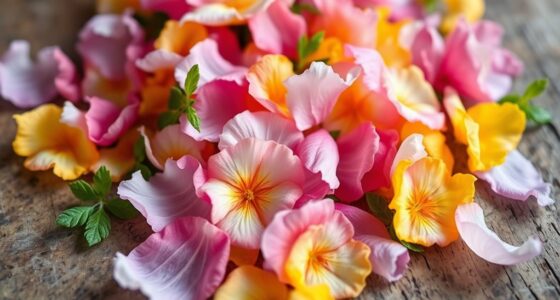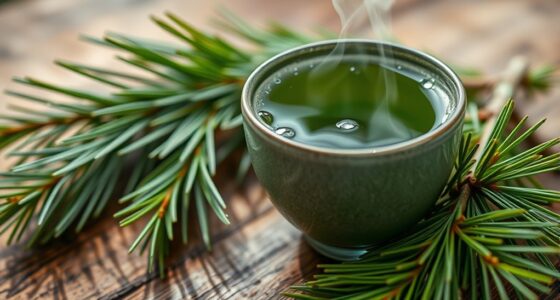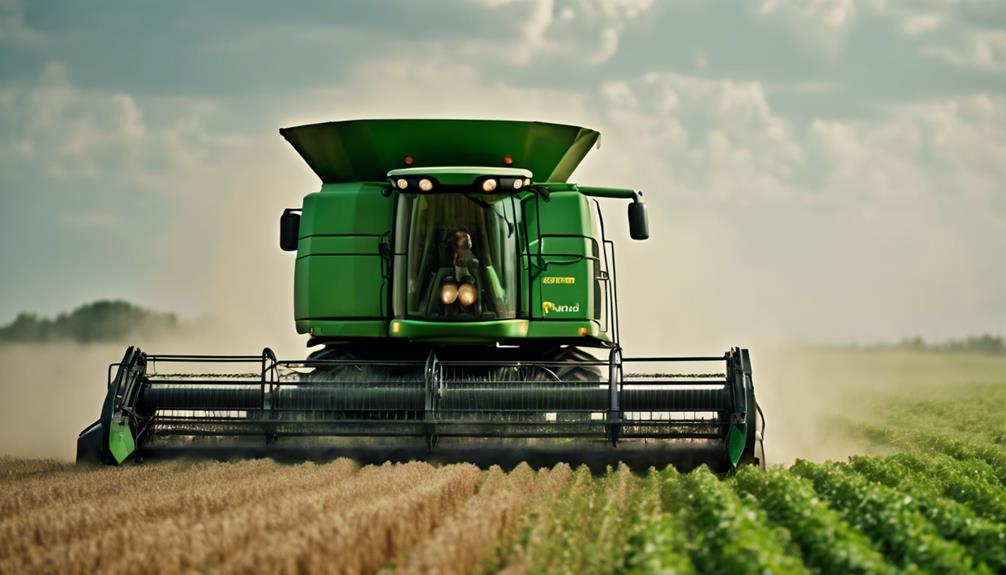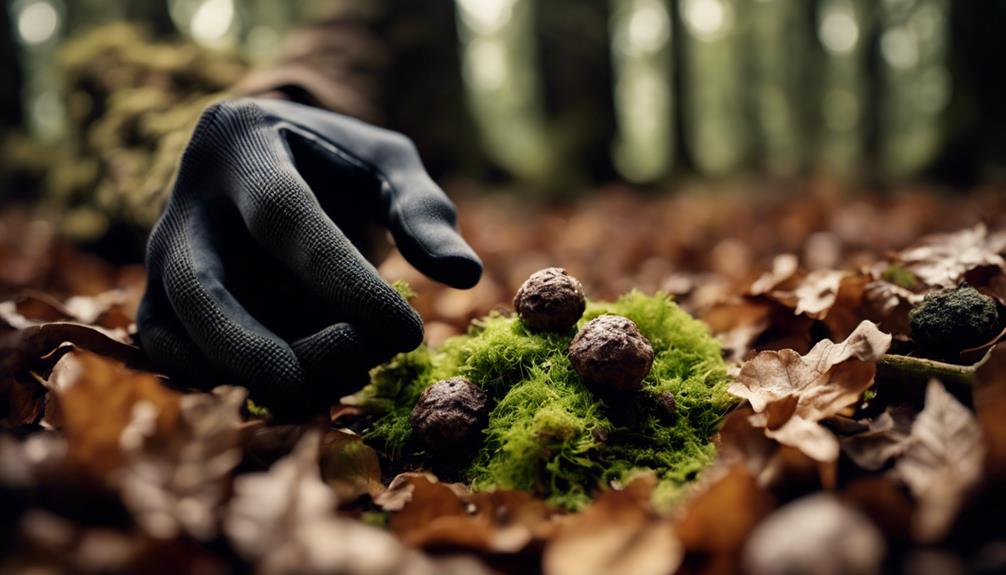Embark on a rewarding adventure in the wilderness to discover the amazing benefits of foraging, where you can find a variety of flavors and develop a stronger connection with nature. Experience the delights of sustainable practices, nutrient-rich foods, and cultural ties that are waiting for you in the wild. Prepare yourself, learn plant identification, and make safety a priority as you embark on this fulfilling journey. From seasonal foraging tips to ethical approaches, the world of foraging is open for you to explore. Immerse yourself in this enriching experience, and uncover the mysteries of the great outdoors that will nourish your mind, body, and soul.
Key Takeaways
- Connect with nature through foraging for sustainable food.
- Learn to identify edible plants and mushrooms for a rewarding experience.
- Follow safety guidelines and respect local regulations while foraging.
- Enjoy nutrient-rich wild foods and diverse flavors.
- Contribute to environmental stewardship and habitat preservation.
Benefits of Foraging
Discover the numerous benefits of foraging, connecting you with nature and promoting sustainable food practices. Engaging in foraging not only allows you to immerse yourself in the natural world but also fosters a deeper appreciation for environmental stewardship.
By sourcing food sustainably through foraging, you contribute to the preservation of habitats and cultural traditions, all while enjoying the bounty of nutrient-rich foods that the environment has to offer.
Foraged foods provide a unique opportunity to connect with the land, fostering a sense of respect and admiration for the ecosystems that sustain us. Additionally, the act of foraging promotes sustainable food practices, ensuring that we utilize resources in a way that supports both present and future generations.
Safety Tips for Beginners

When starting your foraging journey, remember to gear up properly and learn to identify poisonous plants.
These fundamental safety measures are essential for your well-being as you explore the bounties of nature.
Stay safe and informed to make the most of your foraging experience.
Gear up Properly
Make sure to equip yourself with the right gear before heading out to forage, especially if you're a beginner. Proper clothing and footwear are essential to protect yourself from scratches, insect bites, and changing weather conditions. Bringing along tools such as a field guide, magnifying glass, and containers for collecting wild edibles will enhance your foraging experience. Familiarize yourself with how to identify poisonous plants and mushrooms to steer clear of any potential dangers. Starting in familiar areas will boost your confidence before venturing into new foraging territories. Consider joining a foraging group or taking a class to learn from experienced foragers and improve your skills safely.
| Gear | Purpose |
|---|---|
| Appropriate Clothing and Footwear | Protection against scratches, insect bites, and weather conditions |
| Field Guide | Aid in identifying wild food and poisonous plants |
| Magnifying Glass | Assist in inspecting small details of plants |
| Containers | Collect and carry wild edibles safely |
| Foraging Group/Class | Learn from experienced foragers and enhance skills safely |
Identify Poisonous Plants
Before venturing into foraging, it's essential for beginners to familiarize themselves with identifying poisonous plants to guarantee a safe and enjoyable experience in the wild.
Poisonous plants lurk around us, and even the most avid forager must exercise caution. Especially during specific times of the year, toxic plants like deadly nightshade, poison hemlock, and foxglove can be mistaken for edible varieties, posing a serious risk.
To avoid potential harm, it's vital to learn about the toxic plants prevalent in your region. Utilizing poisonous plant identification guides can be a lifesaver, as these tools help you distinguish between harmful and safe flora.
Understanding the distinguishing features and typical habitats of poisonous plants enhances your ability to steer clear of danger while foraging. By investing time in educating yourself about toxic plants, you can turn your foraging adventures into a rewarding and risk-free pursuit.
Stay vigilant, prioritize safety, and enjoy the bounties of nature responsibly.
Seasonal Foraging Calendar
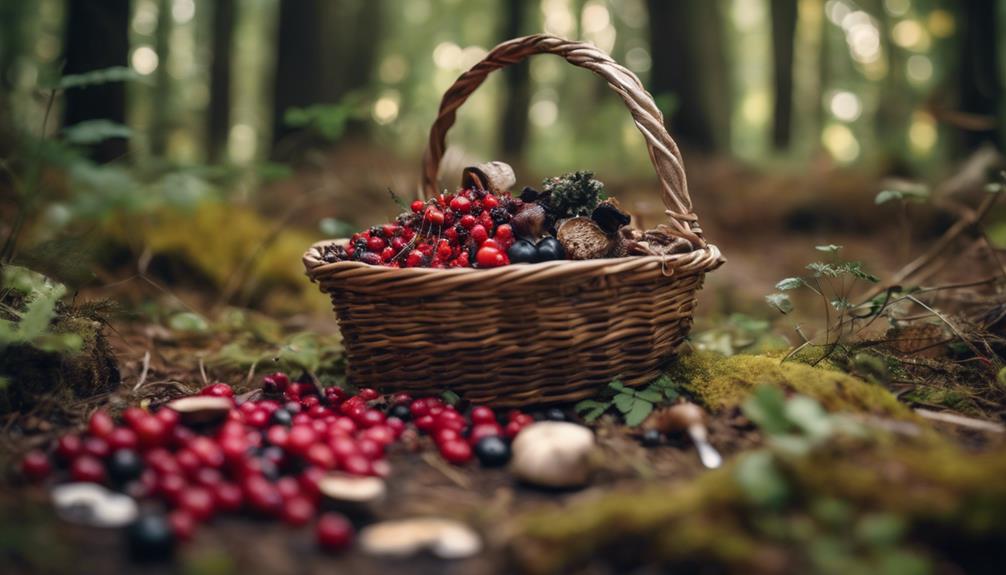
Discover an array of seasonal delights in the foraging world with our detailed Seasonal Foraging Calendar. Each season brings its own unique treasures waiting to be discovered. Here's a guide to help you navigate the bounties of nature throughout the year:
| Season | Forage |
|---|---|
| Winter | Velvet shank mushrooms, black mustard, Alexanders, jelly ear mushrooms, three-cornered leek |
| Spring | Chickweed, nettles, garlic mustard, dandelions |
| Summer | Blackberries, elderberries, mulberries, wild strawberries |
| Fall | Acorns, chestnuts, hickory nuts, walnuts |
Winter offers earthy delights like velvet shank mushrooms, while spring brings a burst of freshness with chickweed and dandelions. Summer is all about juicy fruits like blackberries, perfect for sweet treats. In the fall, nuts like acorns and walnuts are ready to be gathered for hearty dishes. Remember, year-round foraging is possible with the right knowledge, ensuring a continuous supply of wild edibles throughout the seasons.
Edible Treasures in the Wild
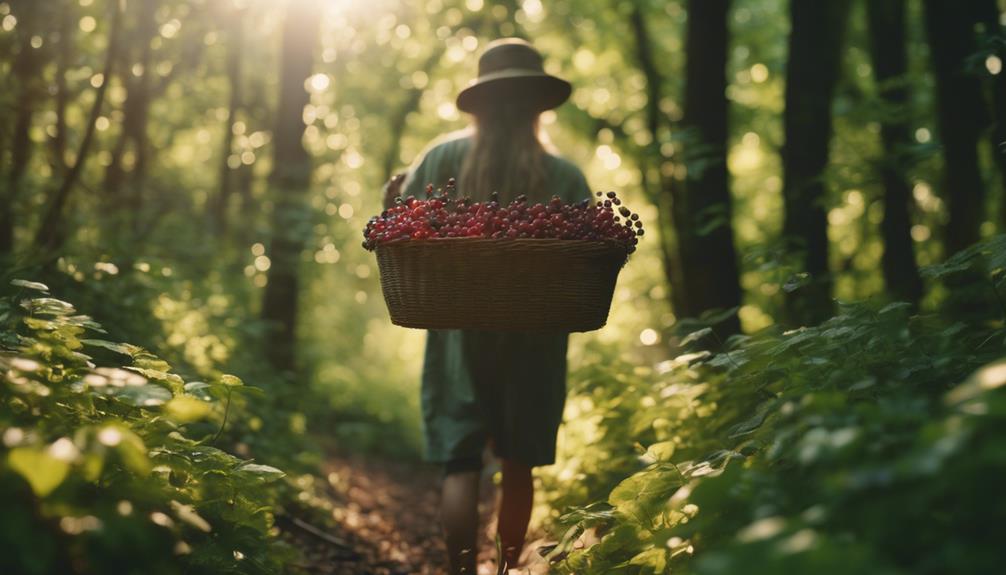
Discover a world of culinary possibilities with wild edible plants. From dulse to velvet shank mushrooms, the wilderness holds a bounty of nutritious treasures waiting to be explored.
Stay safe by following essential foraging tips to enjoy your wild harvest responsibly.
Wild Edible Plants
Exploring the wilderness can lead you to discover a treasure trove of flavors and nutrients in wild edible plants. Abundant in nature, these plants offer a diverse range of tastes and essential nutrients waiting to be explored.
To forage for wild edible plants successfully, it's crucial to develop proper identification skills. Common examples like dandelions, chickweed, wild garlic, and lamb's quarters are popular choices known for their culinary potential.
By incorporating these wild edibles into your dishes, you can add a unique and exciting twist to your culinary creations. Additionally, learning about wild edible plants not only enriches your palate but also deepens your connection with nature.
It promotes sustainable food sourcing practices, allowing you to appreciate the abundance of natural resources around you. So, next time you venture into the great outdoors, keep an eye out for these edible treasures and access a whole new world of flavors and nutrients waiting to be savored.
Foraging Safety Tips
To forage safely for edible treasures in the wild, it is essential to follow specific guidelines and precautions. Here are some key safety tips to guarantee an enjoyable and risk-free foraging experience:
| Foraging Safety Tips | Description |
|---|---|
| Seek Permission | Always ask for permission before harvesting any plants, especially on private or protected lands. |
| Proper Plant Identification | Make sure you can correctly identify the plants you intend to gather to avoid any harmful mistakes. |
| Limit Gathering Amount | Harvest only what you need, allowing the plants to continue to thrive and support local ecosystems. |
| Start in Familiar Areas | Beginners should begin foraging in familiar locations to build confidence and reduce risks. |
| Be Cautious with New Foods | Exercise caution when trying new wild foods, as some may have toxic look-alikes that are dangerous. |
Following these safety tips will help you enjoy the wonders of foraging while respecting nature and staying safe in the process.
Sustainable Foraging Practices
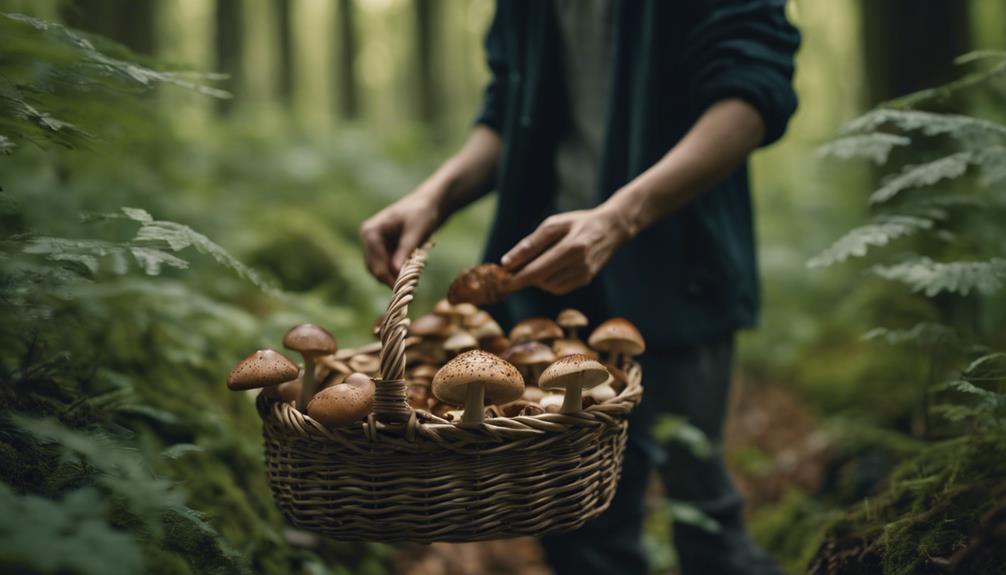
Engage in foraging sustainably by harvesting wild foods in a manner that supports the continued growth and health of plant populations. Sustainable foraging practices involve ethical harvesting techniques to minimize impact on ecosystems and wildlife habitats.
Prioritizing leaving no trace, respecting wildlife, and promoting biodiversity conservation are key aspects of sustainable foraging. By following these practices, you contribute to the long-term health and resilience of natural ecosystems.
Sustainable foraging not only benefits the environment but also fosters a deeper connection with nature. It encourages responsible consumption of wild foods, ensuring that future generations can continue to enjoy the abundance of nature.
Foraging for Beginners

To start your foraging journey as a beginner, begin by seeking permission before harvesting wild plants and mushrooms. It's vital to respect the environment and any regulations in place.
As a novice forager, start with easy-to-identify edible plants like dandelions, wild garlic, and blackberries. These are commonly found and relatively safe options. Safety is paramount; always carry a field guide for plant identification to avoid any potential risks.
Learning to forage also involves understanding the seasons for different edible plants and mushrooms. Timing is pivotal to make sure you're harvesting when the plants are at their best.
If you're new to foraging, consider joining guided foraging tours or workshops. These experiences can provide valuable knowledge and hands-on learning opportunities under the guidance of experts.
Embrace the adventure of foraging as you explore the natural world around you and discover the abundance of edible treasures waiting to be found.
Nutrient-Rich Foraged Foods

Discover nutrient-rich foraged foods like dulse, ceps, and jelly ear mushrooms that offer essential vitamins and minerals. These wild edibles not only provide a unique culinary experience but also pack a nutritional punch. Seasonal foraging in winter can introduce you to black mustard, velvet shank mushrooms, and three-cornered leek, diversifying your intake of nutrients. Year-round foraging offers a sustainable way to incorporate a variety of wild harvests into your diet, contributing to a well-rounded nutritional profile.
Check out the table below for a quick reference to the nutritional benefits of these foraged foods:
| Foraged Food | Nutrients |
|---|---|
| Dulse | Rich in iodine, iron, and potassium |
| Ceps | Excellent source of vitamin D and B12 |
| Jelly Ear Mushrooms | High in iron and vitamin D |
| Black Mustard | Packed with vitamin C and fiber |
| Velvet Shank Mushrooms | Good source of protein and selenium |
| Three-Cornered Leek | Contains vitamins A, C, and calcium |
Embark on a journey to explore these nutrient-rich foraged foods, enriching your diet with the goodness of nature.
Foraging Etiquette and Regulations
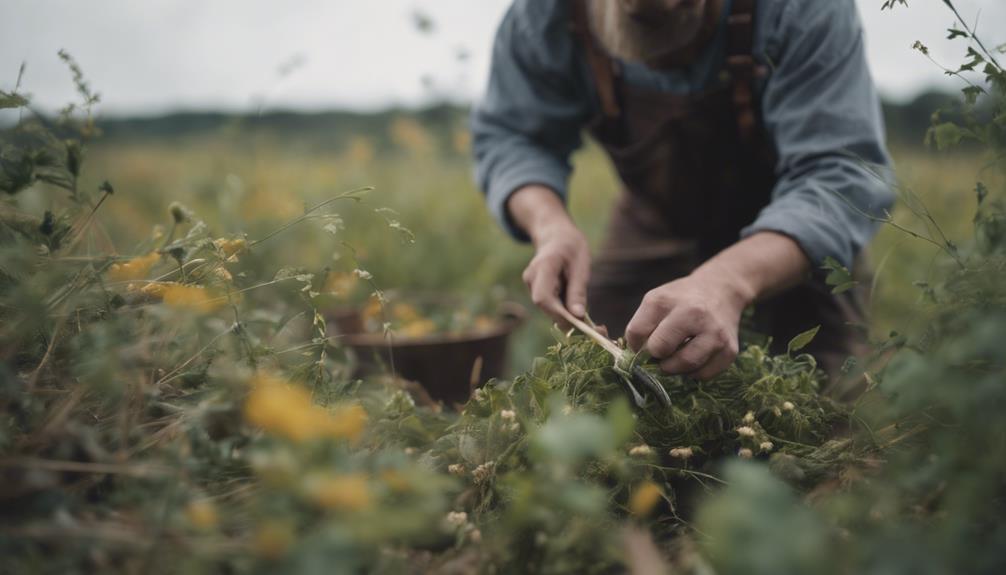
Respecting foraging etiquette and adhering to local regulations is essential for sustainable and responsible harvesting of wild plants. Before venturing out to forage, it's important to seek permission from landowners to guarantee you're harvesting legally and ethically.
Regulations governing foraging activities can vary depending on the location, with some areas prohibiting foraging in protected lands to safeguard delicate ecosystems. By only taking what you need and leaving habitats undisturbed, you contribute to the preservation of wild plant populations and help maintain ecological balance.
Following ethical guidelines not only benefits the environment but also ensures that future foragers can continue to enjoy the bounty of nature. By understanding and complying with local foraging regulations, you play a crucial role in promoting sustainable foraging practices and environmental conservation.
Frequently Asked Questions
Can I Forage in Public Parks and Reserves?
Yes, you can forage in public parks and reserves. Remember to respect local regulations, avoid protected areas, and only pick what you can identify safely. Enjoy exploring nature and discovering the bounty it has to offer!
How Do I Properly Clean and Store Foraged Foods?
To properly clean and store foraged foods, start by rinsing them thoroughly to remove dirt. Store in breathable containers in the fridge for freshness. Remember, proper cleaning guarantees safe consumption. Enjoy your foraged treasures responsibly!
Are There Any Poisonous Look-Alikes to Watch Out For?
Watch out for poisonous look-alikes when foraging. Some plants mimic safe ones, but can be harmful. Always research and be cautious. Remember, your safety is essential. When in doubt, don't eat it.
What Tools and Equipment Do I Need for Foraging?
You might think foraging requires fancy tools, but all you really need are a good pair of gloves, a basket or bag for your finds, a guidebook, and a sharp knife for cutting.
Can Foraging Be a Profitable Activity?
Foraging can be profitable if approached strategically. By selling rare finds to local markets or restaurants, participating in foraging tours, or creating value-added products, you can turn your passion for foraging into a viable income source.
Conclusion
Now that you've learned the basics of foraging, it's time to grab your basket and head out into the wilderness. Remember to tread lightly, respect nature, and follow local regulations.
By exploring the bounties of the great outdoors, you'll not only discover delicious and nutritious foods but also develop a deeper connection to the natural world.
So, go forth and uncover the edible treasures waiting to be found in the wild!

